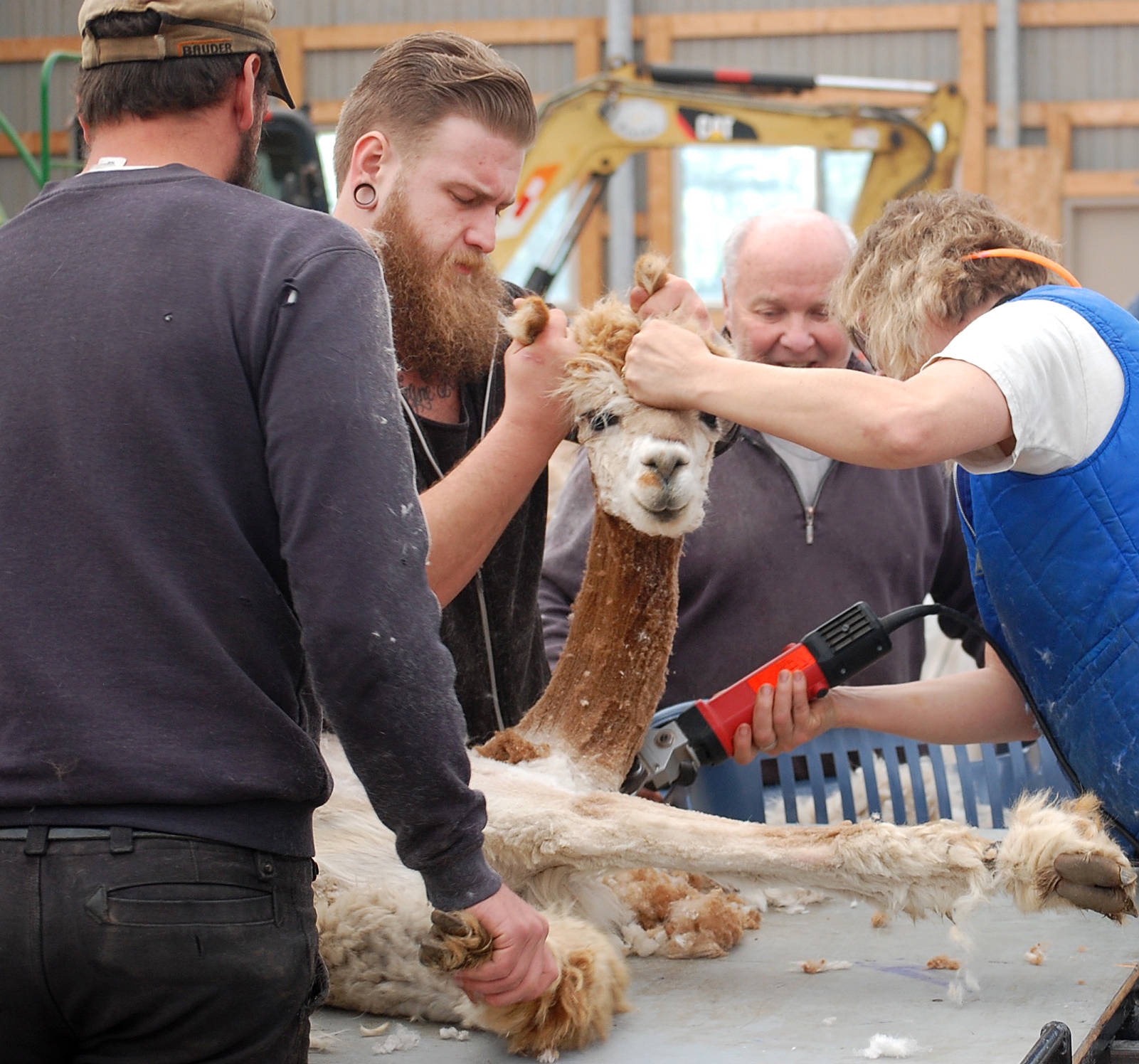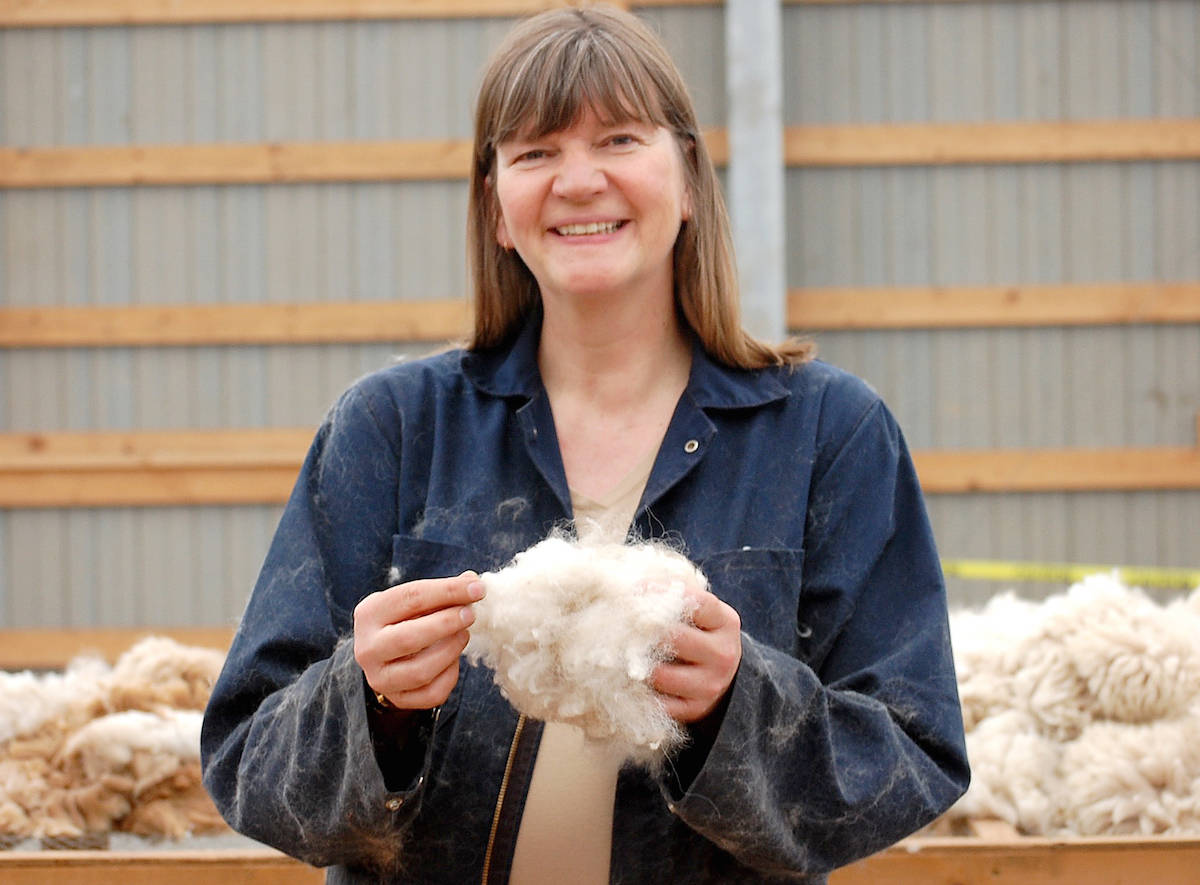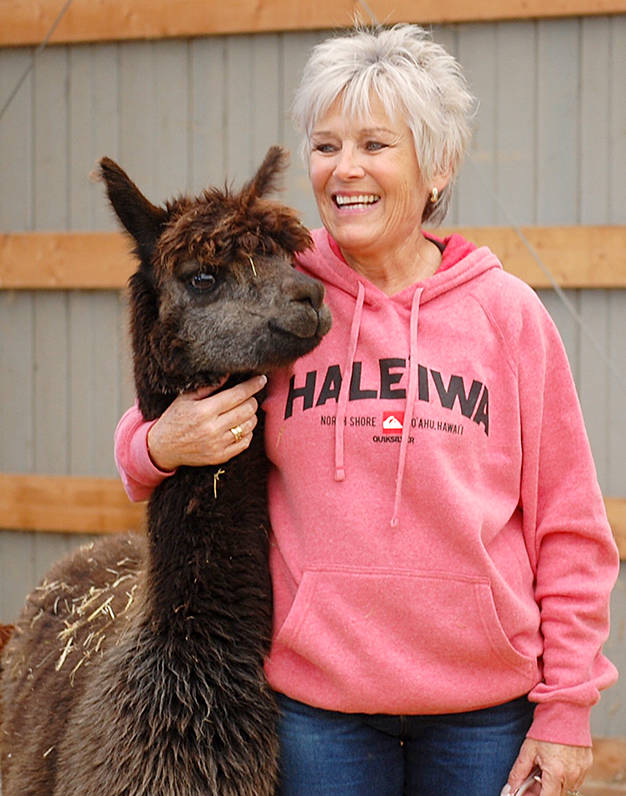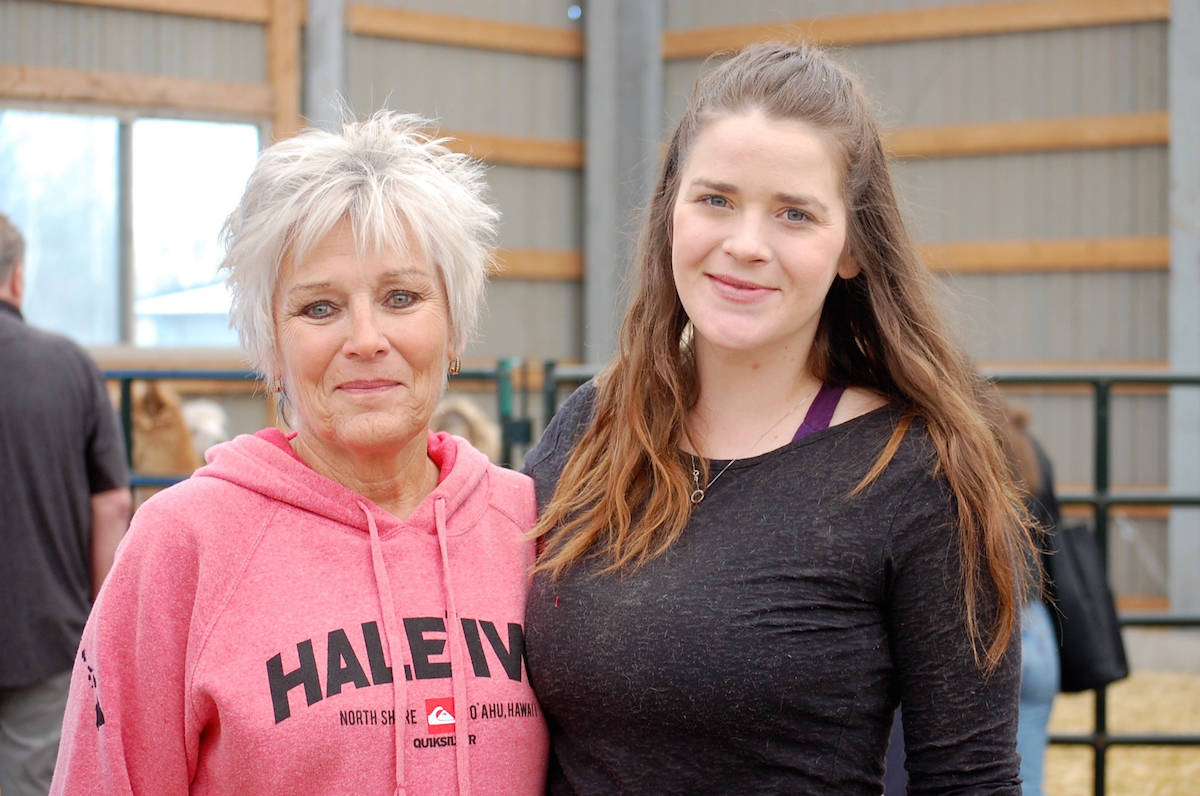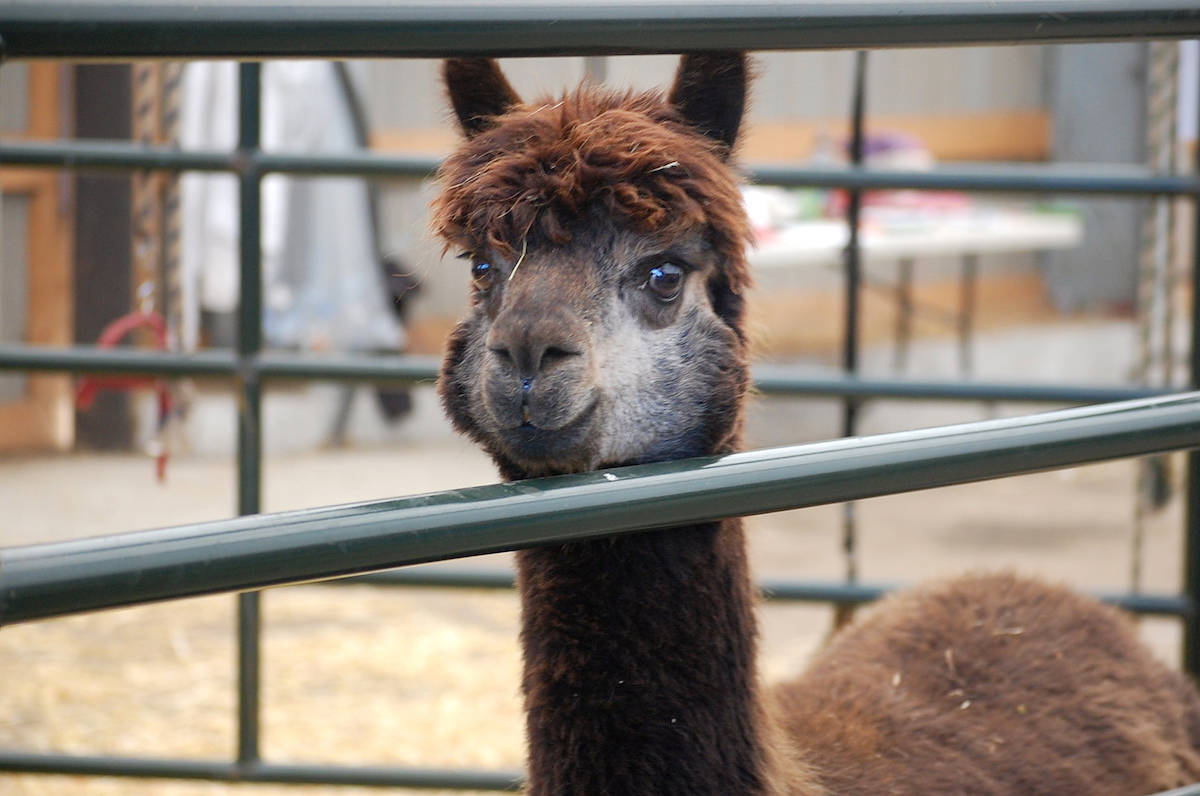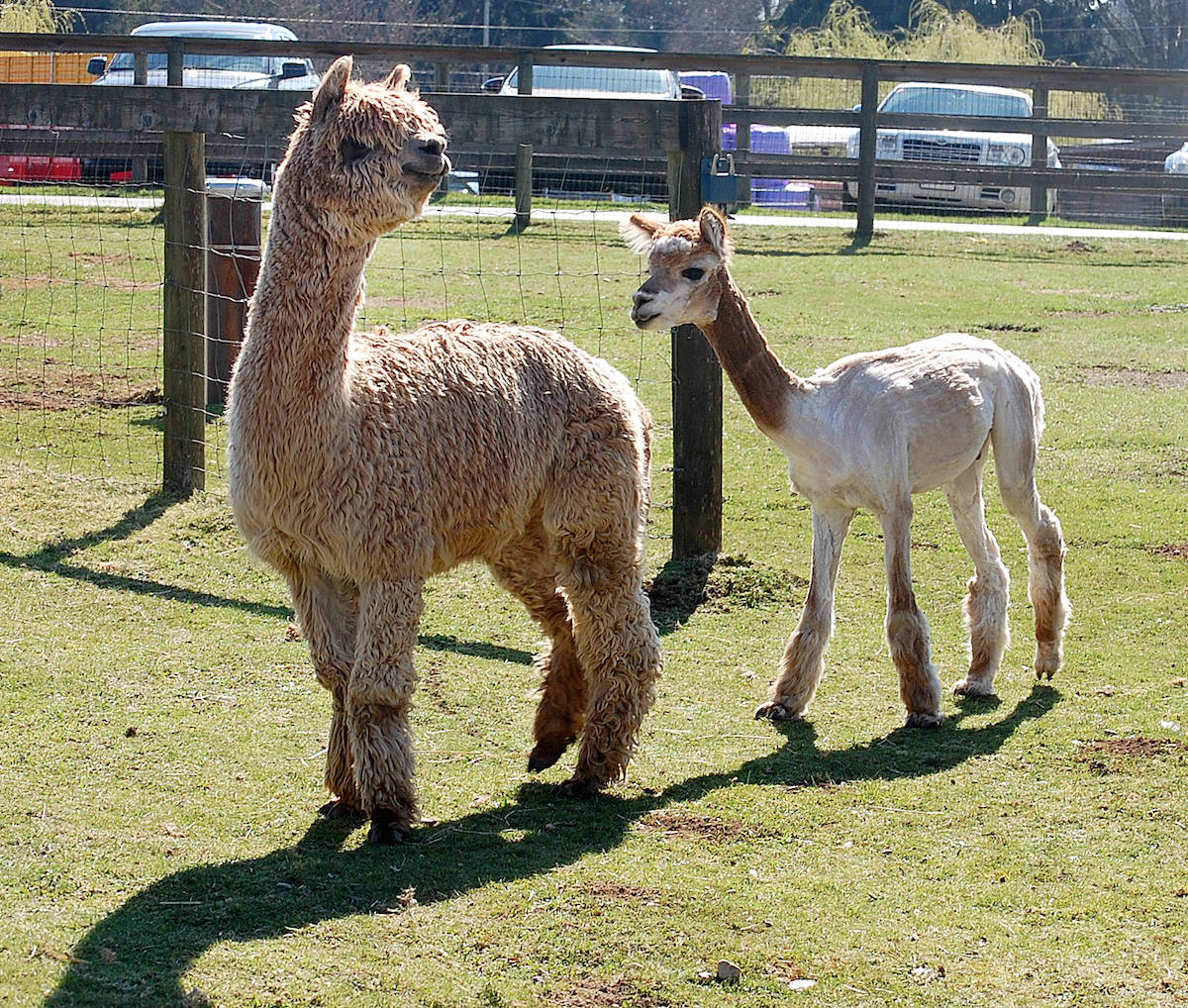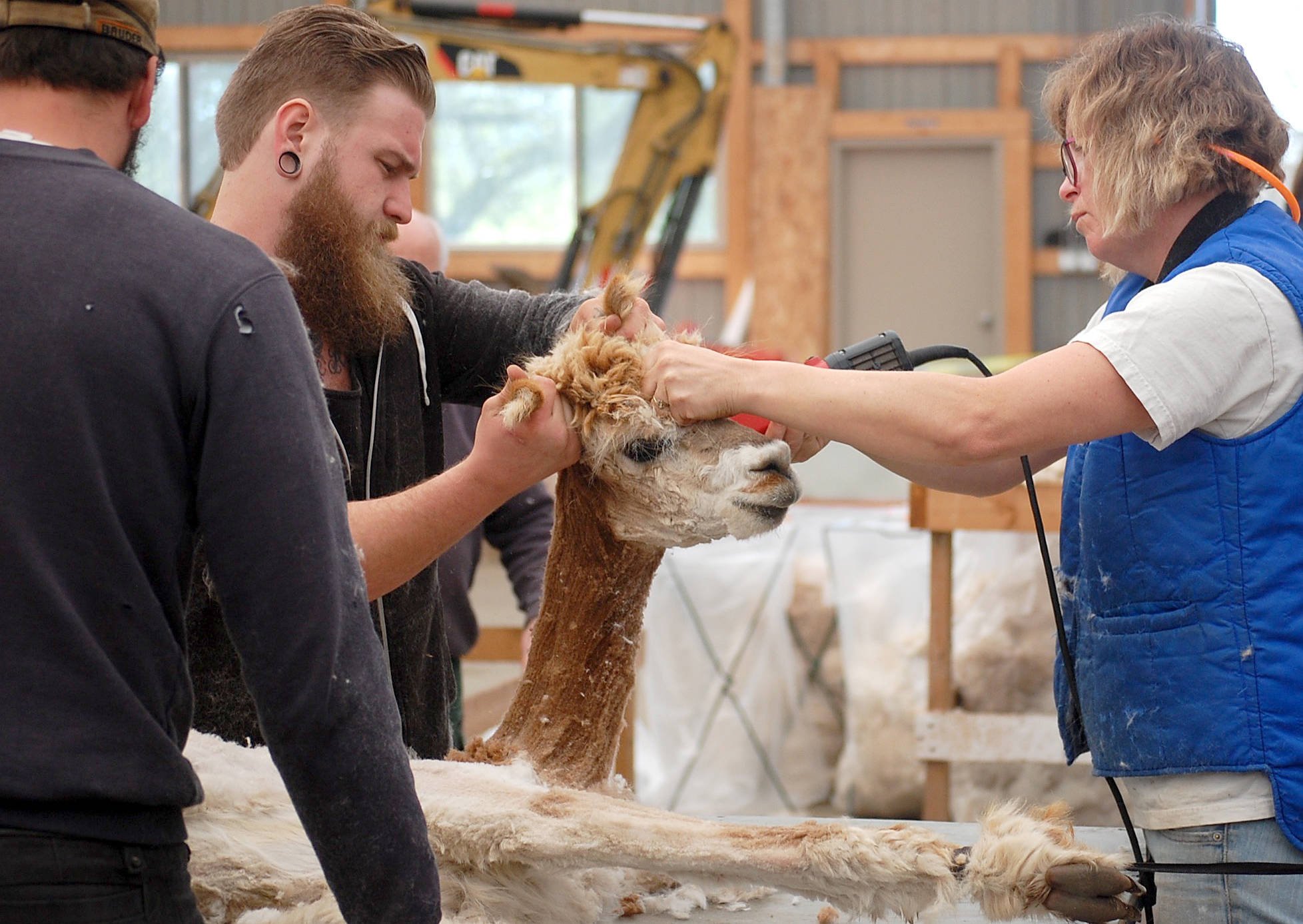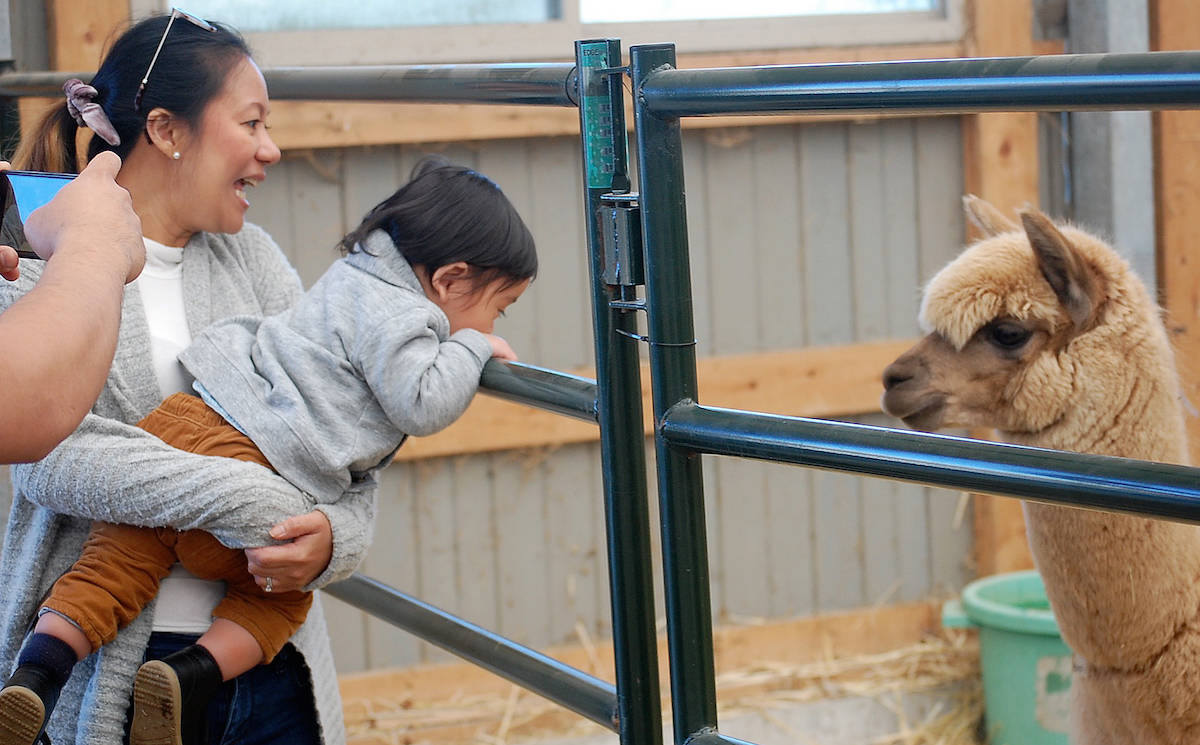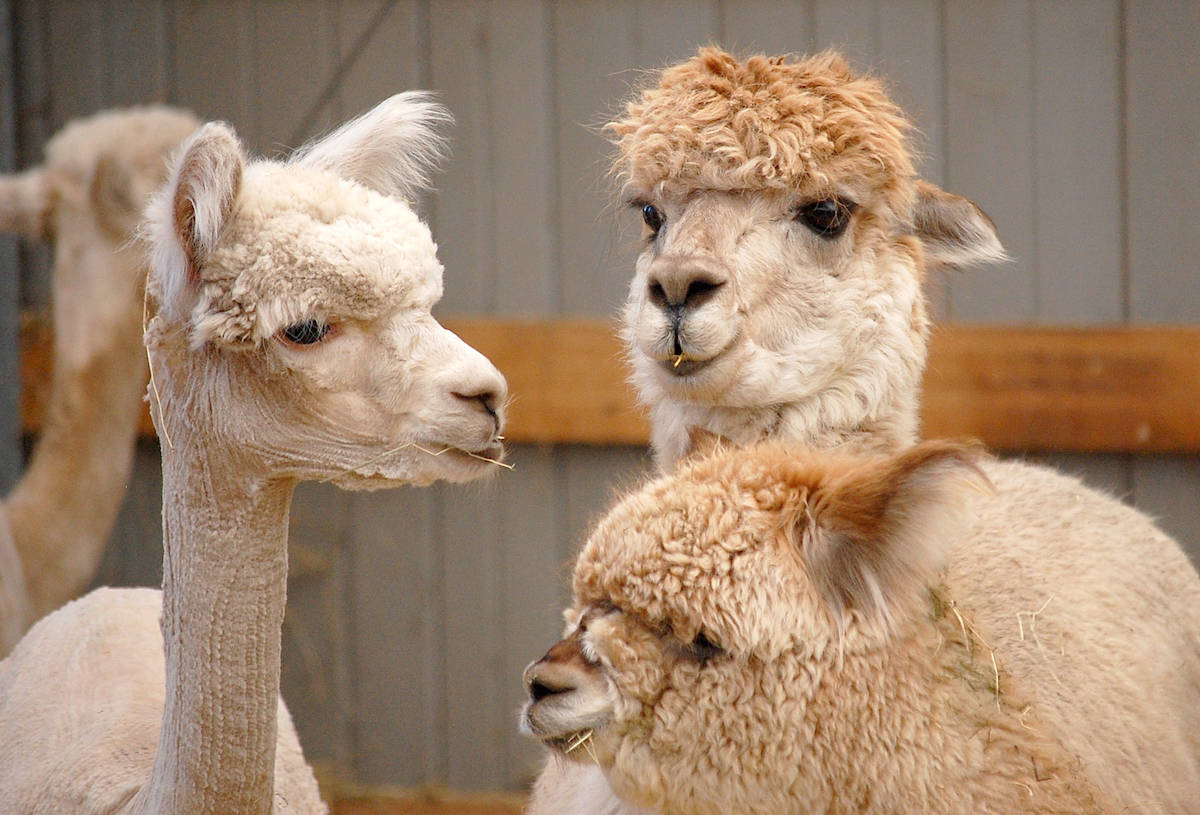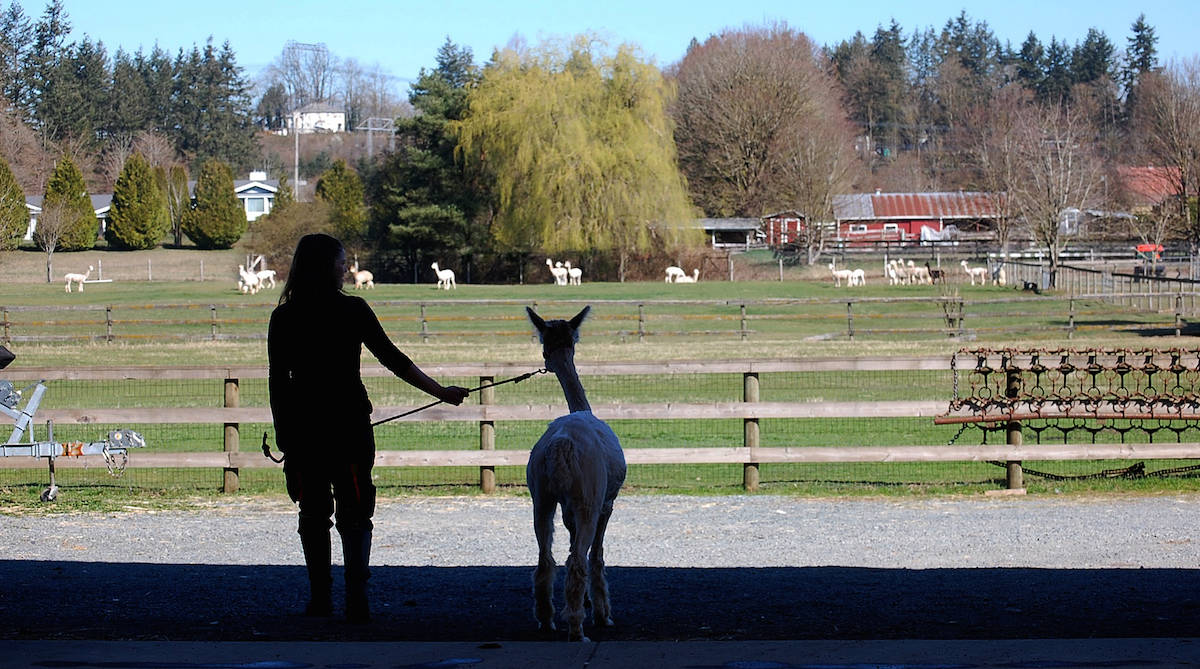With spring cleaning came spring shearing for a herd of 80 fleecy alpaca on Kensington Prairie Farms this past weekend.
On Saturday and Sunday, the Langley farm hosted a public shearing event where each animal lost five to 10 pounds of fibre.
Twenty-five alpacas were sheared each day for three days starting Friday when the farm hosted a private event for alpacas not halter-trained.
One-by-one, alpacas were led to a shearing table that rotated to lay the animal down flat. From there, four handlers fastened down each anaimal as an electric razor was applied to its fur by master shearer Trudy McCall.
Farm owner, 68-year-old Catherine Simpson, started the fleecy endeavour with her husband, Jim Dales, 18 years ago.
Dales floated around the shearing table and caught excess fleece in a basket.
“This is beyond my wildest imagination – all these people. I couldn’t have asked for more,” Simpson said.
READ MORE: Business is good for Langley alpaca farm
Cathy – who worked the sorting table – has owned an Alpaca farm with shearer McCall for 23 years in Lloydminster, Alta.
Shorn fleece was separated into six grades based on thickness of the hair and crimp-style, as well as two lengths.
“You can find up to six grades of fleece on one animal,” Simpson explained.
After the alpaca was sheared and returned back to the herd, other alpacas had trouble identifying it, Simpson added.
“It makes me laugh – they don’t recognize the no-fleece so they have to smell the animal to know who it is,” Simpson said.
Her granddaughter, Dee Martens, manages day-to-day operations on the farm. Martens assisted with transportation, shear-prep, and post-care on shearing day.
The alpacas were returned to green pastures following the ordeal, able to enjoy their new haircuts with a fresh roll in the grass.
Simpson emphasized the farm as being one with livestock purposes, and although the alpacas are “cute,” they are not treated as “pet-stock.”
“These are first and foremost fleece animals so we want to harvest the fleece,” Simpson emphasized.
Farm workers orchestrate selective breeding measures to improve fleece quality and manifest new genetic traits onto newly birthed fawns.
Workers have previously bred coarse-haired stud males with females that possess finer coats to increase density in the future generation’s fur, Simpson offered.
“We can always improve the quality of the fleece through proper breeding,” Simpson said, elaborating on the farm’s move towards more facial fur coverage and shorter noses.
Side-samples from the fur of each animal is sent off for testing in Australia. The farm uses the final test results to inform their breeding efforts.
RELATED: Alpacas lined up fpr shearing in Fraser Valley
“It is a very systematic approach to breeding and genetics,” Simpson said.
Private tours of the farm ($10 suggested donation per person) with money going to Quechua Benefit – a charity founded by North American alpaca breeders “as a way to give back to the original alpaca farmers,” Simpson said.
“It began as a medical and dental mission with nurses, doctors and a dentist… people would walk to receive our free medical services,” Simpson said.
The non-profit health initiative has now expanded into a chapel, school, orphanage and a free dental clinic year-round for locals in need.
Kensington Prairie remains open to the public on Friday all year from 12 to 5 p.m., Saturday 10 a.m. to 4 p.m., and Sunday 12 to 4 p.m.
